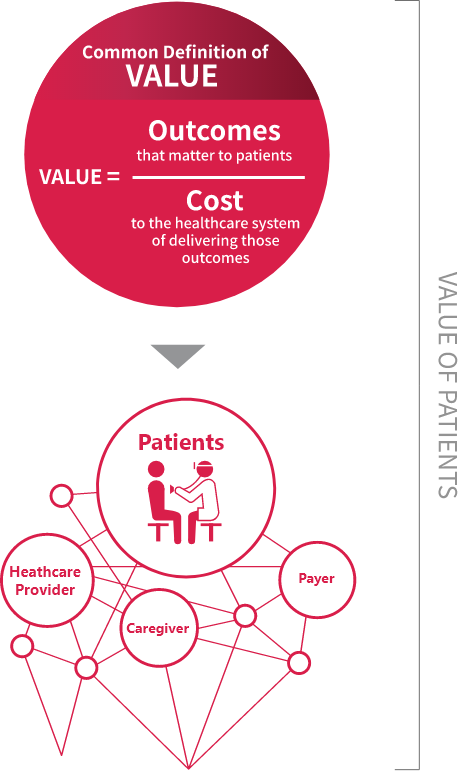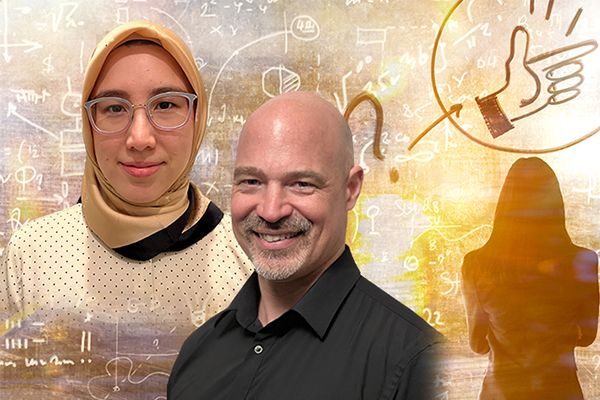Patient centricity at Astellas—all about action
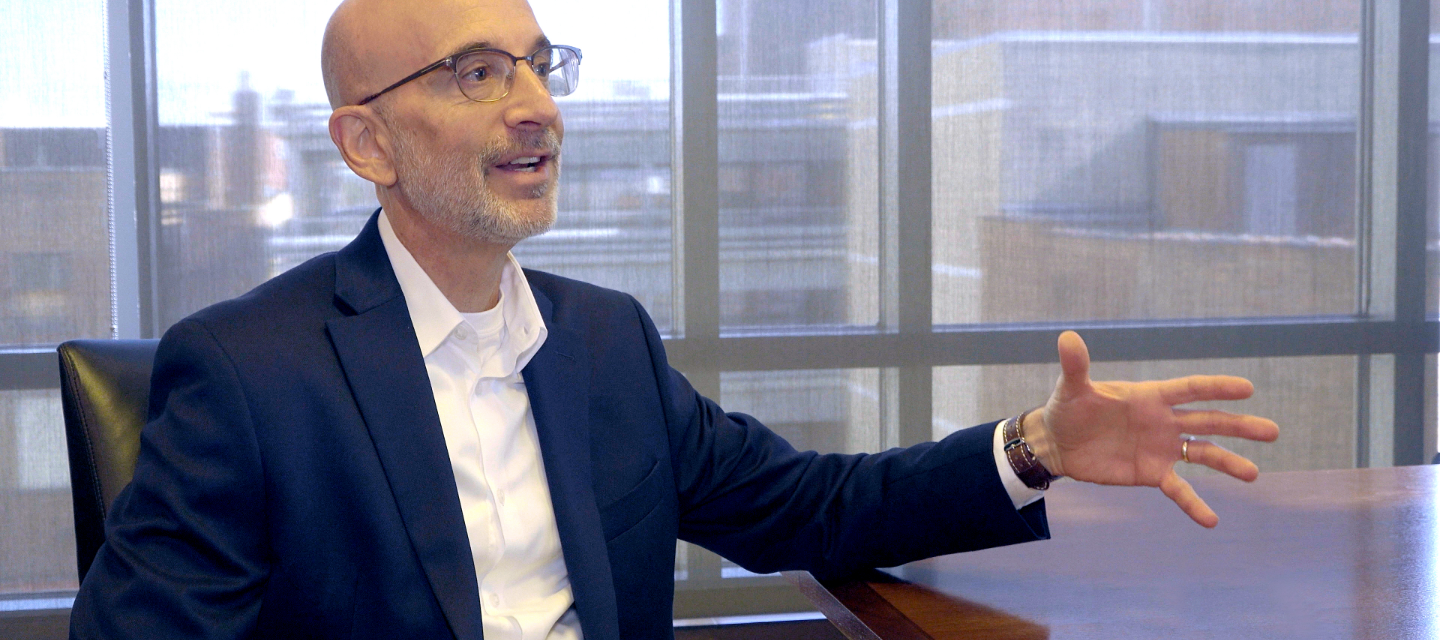
“At the end of any discussion on patient centricity, you tend to get to a, ‘why’ or ‘so what?’ That’s a great topic, but what’s meaningful about it?” These are questions that Anthony Yanni, a primary care physician, MBA, Astellas’ Senior Vice President and Global Head of Patient Centricity has heard often. Discussions on advancing patient-centric cultures abound across the industry but turning talk into meaningful action is essential to effect real change for companies and the patients they serve.
For Astellas, patient centricity is not about buzzwords and grand statements; it is about action. It is about robust practices and a fundamental understanding of real-world settings. It involves crafting processes and capabilities that enable Astellas to deliver. It is about reaching a stage where the voices of both patients and researchers are equally represented during the drug development process.
Astellas’ patient centricity vision—to support the development of innovative health solutions through a deep understanding of the patient experience, medical needs, and behavioral drivers of care—is not just a convenient statement. It is a guiding principle for action, which supports the company’s corporate strategy.

The beginnings of a meaningful patient-centric culture
A team dedicated to patient centricity within a pharmaceutical company may seem redundant. After all, it should be a given that a company focused on drug discovery, development and delivery to address the health needs of patients would be, by its very nature, patient centric.
However, the concept of "medical value" has always been open to interpretation. This has often resulted in one-size-fits-all standardized concepts of treatment, and situations where the “success” of a new drug was judged in the research lab and not a real-world setting.
As a clinical medicine practitioner, Anthony spent more than twelve years treating patients daily. This wealth of experience in the examination room put him in the position of understanding what matters most to his patients on a holistic level. For example, he recalls a situation when he was asked by another medical professional to share his opinion on the meaning of medical value. He said, "My opinion means absolutely zero, because my opinion is one person. What we need to do is to create an opportunity for patients themselves to let us know.”
Fast-forward over a decade and the pharmaceutical industry is now taking note. Anthony states, “Companies realized that if we aren’t talking about patient centricity, we’re the outliers.” But the talk must lead to an actionable outcome. “It’s easy to talk about. It’s even easy to have a team meet patients and write down their information.” But the question is, what do you do with that information? “How do you change a company infrastructure to accommodate a new decision tree when it comes to discovering, developing and delivering new medicines, and understanding their potential value?”
Treatment versus care—understanding the landscape
Meaningful patient centricity is difficult to define. It is a fluid concept affected by both the healthcare landscape and the ever-changing emotions and behaviors of patients and their caregivers. Understanding and adapting to the shifting environments and behaviors is a key to creating a meaningful patient-centric culture. COVID-19 and the rise in digital healthcare have both altered the landscape and revealed an essential element of patient centricity that often gets overlooked—treatment versus care.
COVID-19 has shaken up mindsets and behaviors once thought to be set in stone. The tragedy of the pandemic pushed pharmaceutical companies to act in unprecedented ways. Anthony states that COVID-19 demonstrated “breakthroughs can happen fast when drug companies and regulators listen to, and communicate openly with, patients.”
While the healthcare response to the unprecedented COVID-19 pandemic has in many ways been exceptional, the pandemic has in other ways negatively affected patient care for non-COVID-19 conditions such as cancer. For example, patients have been forced to go through treatments alone without the support of caregivers and be diagnosed with life-altering illnesses through computer screens. While these situations may be unavoidable, it is important to understand and address the anxiety and stress caused by such changes.
This is the crux of treatment versus care. Anthony explains that “treatment is delivering a medicine, and we're very good at it in the pharmaceutical world. What we have not yet perfected is also understanding the issues that are affecting a patient in their real-world environment outside of the treatment that we're delivering, like anxiety or fatigue.”
The rise in digital healthcare provides opportunities to address this. If utilized properly, wearable digital technology can offer insight into patients’ emotions and lifestyles that would potentially be “a huge leap forward in delivering care versus treatment.” However, as in every aspect of a patient-centric approach, we have to be very thoughtful, careful, and make sure that we respect the patient and their privacy; that they fully understand everything prior to using a wearable device is essential.
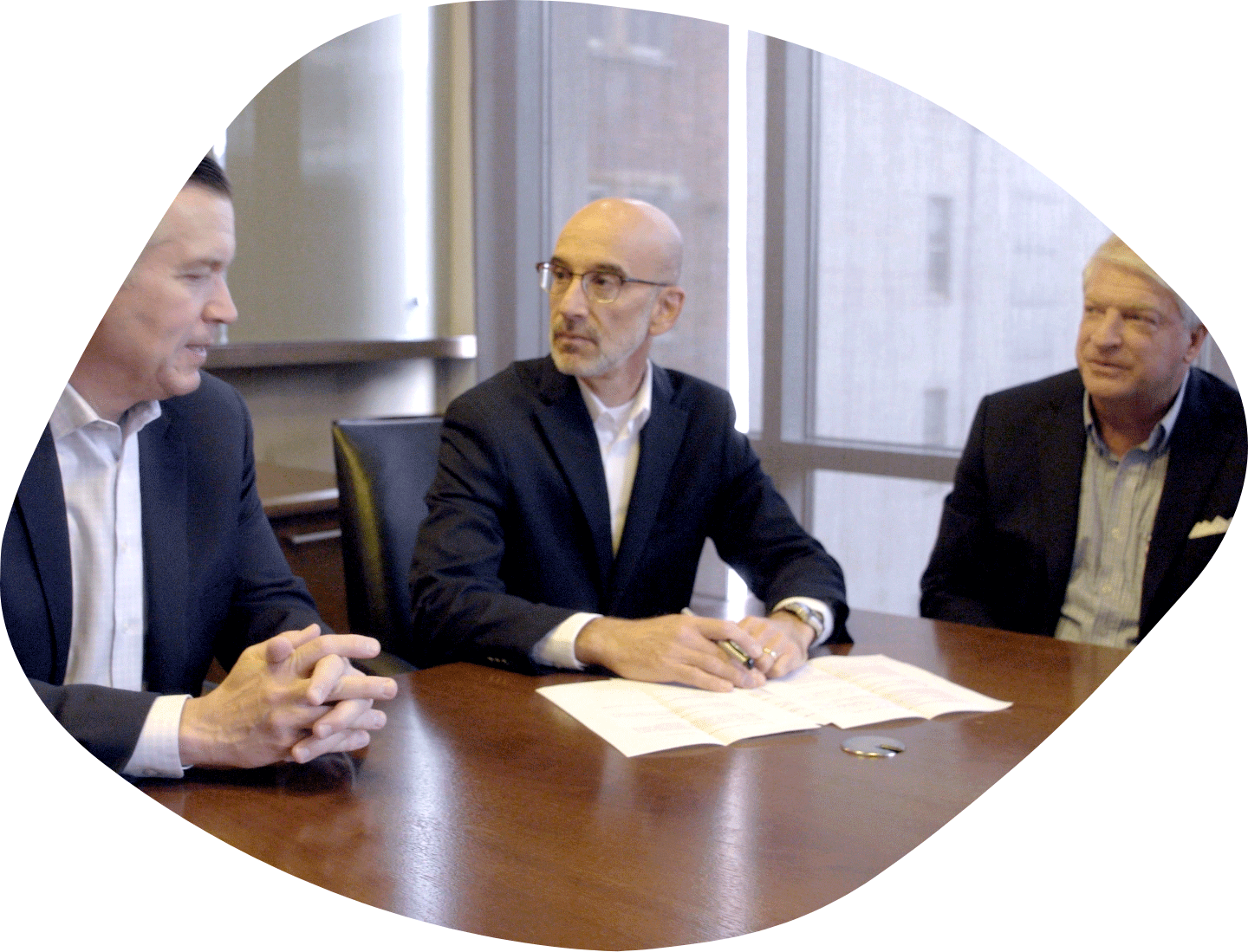
Patient Centricity at Astellas—a plan of action
So, how does the insight gathered from patient behavior transform into meaningful and actionable outcomes? With the announcement of our Corporate Strategic Plan (CSP2021), Astellas has laid out the key goals and execution plans to create and deliver VALUE for patients. In the equation of Common Definition of VALUE, the numerator is defined as “outcomes that matter to patients.”
Please refer to here about the detail of Common Definition of VALUE.
However, for Astellas to make meaningful steps toward creating and delivering this VALUE, it must have a foundational culture of patient-centricity, where all staff have a conscious awareness of the patient in everything they do and integrate that awareness into their everyday working practices, regardless of whichever team or division they belong to. The first step in this culture-building effort was to inspire all staff to always be thinking about the patient. To do that, the Patient Centricity team created Patient Centricity Month—an industry-leading, month-long, company-wide internal awareness and education campaign that ran throughout June 2021.
During this month, leaders from every aspect of drug discovery, development and delivery came together to talk about why the patient is important and how they’re utilizing patient insights in their work. External speakers including patient groups shared their insights. The event acted as a reminder to Astellas staff to “remember that the patient is why we do what we do working in pharma.”
Delivering patient focused medicines development
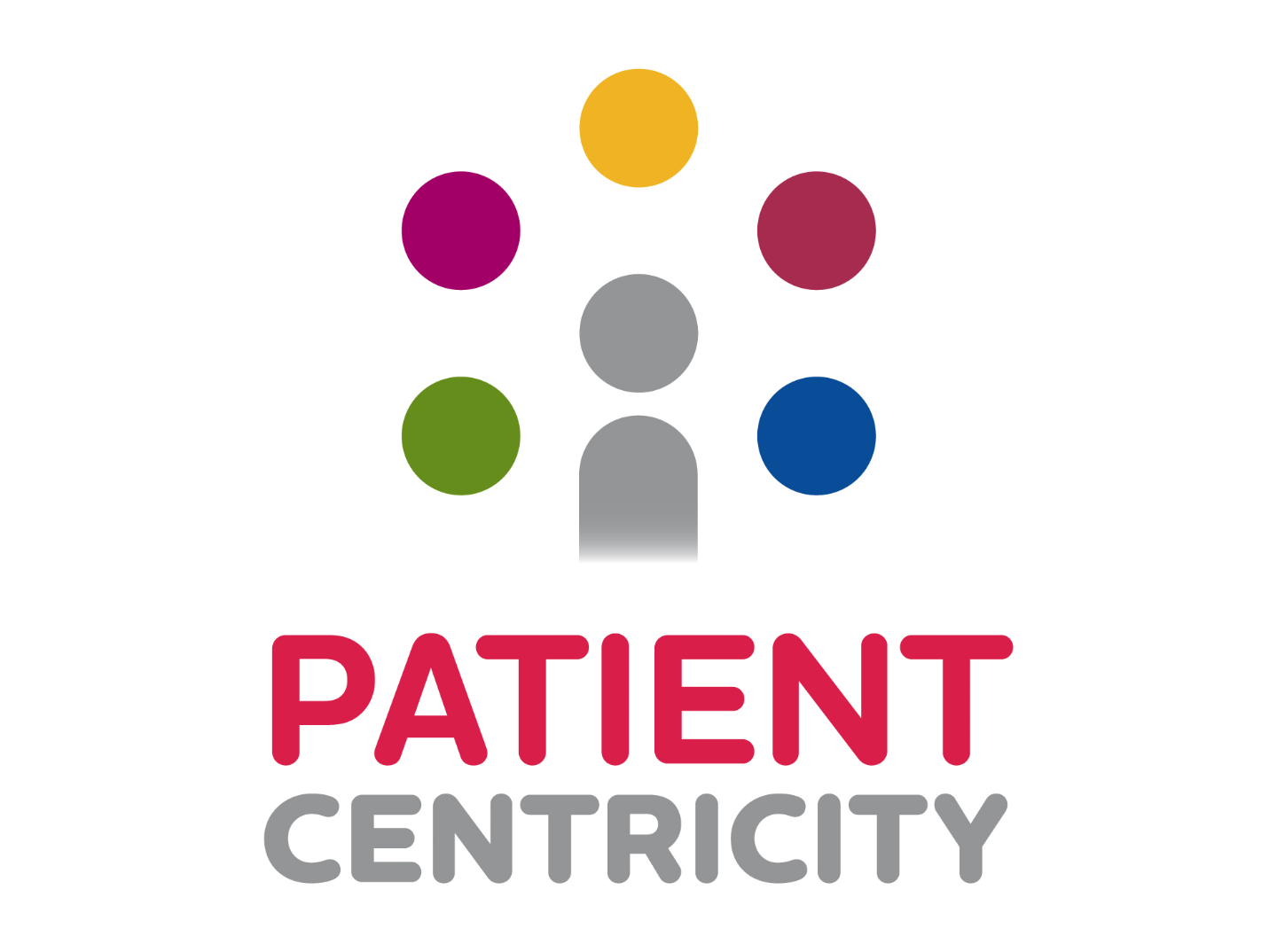
In order to build the necessary conditions and capabilities to realize a genuine patient-centric culture, Astellas is committed to following a patient focused medicine development (PFMD) approach. However, for the initiative to be meaningful, Astellas adds an extra letter to the commonly understood acronym—PFMD + D, for delivery. To make PFMD a reality, it’s important to bring in all the infrastructure and capabilities. Without delivery, patients are only involved during the development stage and not actually when they’re taking the medicine, thus missing the opportunity to understand and address the challenges patients face in their real-world settings and failing to balance treatment versus care.
Astellas addresses the balance by making sure we don’t stop when the work of developing the medicine is done. After achieving the discovery and approval of a new drug, we must next focus on taking care of the patients. Anthony states that “we have to address the behaviors and the associated symptoms. That’s the second D.”
A practical and highly specialized approach to patient centricity
Astellas is working on putting the aforementioned concepts and processes into action and has deployed highly specialized teams in five focus areas across the globe to meet individual targets as well as combining their strengths to realize Astellas’ patient centricity vision.
Patient Partnerships (PPat)
Doug Noland: “We are focused on building relationships and systems that promote a healthy, compliant two-way dialogue between Astellas employees and Patient Organizations, patients and their care partners. The meaningful insights gleaned from these discussions can inform the design and execution of everything from our clinical programs, to patient reported outcomes, our product access plans and beyond. Engaging directly with patients early and often is how we intend to ensure maximum value is developed and delivered to patients. We also collaborate with Patient Organizations to leverage their distinct capabilities (including insights and research) and support unbranded disease awareness and educational resources to address practical and emotional needs of patients in our Primary Focus areas.”
Medical Intelligence and Patient Insights (MIPI)
Joe Collins: “Our collaboration and support is with Project Teams in Research and early Development. We provide insight to balance out the conventional question of ’can we create a medicine?’ with ’should we?‘ By considering patient need and ‘medical value,’ the team provides insights to help inform Project Team decisions around indications being pursued, may assist leadership in understanding funding needs for early assets and works with teams considering external opportunities for Research & Development (R&D) and Rx+®.
Patient Insights and Solutions (PInS)
Joe Collins: “Our team provides actionable insights and helps to develop personalized solutions for Astellas’ late-stage programs. Our approach allows for a deeper, more holistic understanding of patients’ needs in the real-world setting, with a big data analysis that helps our teams identify potential solutions that address what matters most to patients.
As an example of our unique approach, we held a workshop with the dry Age-related Macular Degeneration(dryAMD) team and utilized Virtual Reality (VR) technology so participants could experience life through the eyes of a dryAMD patient. This kind of workshop led us to deeply understand patients’ insights and develop personalized solutions for late-stage programs.”
Behavioral Science Consortium (BSC)
Lisa Mattle: “We’re here to understand and improve, with empathy and compassion, every single aspect of a patient’s life experience and journey. We work with behavioral scientists around the globe to better understand the behaviors of patients, healthcare practitioners, and caregivers in the real world. Through these insights, we can inform better decisions, identify new opportunities to make an impact on their life, and enable the delivery of a more holistic, comprehensive, and differentiated approach to patient care.
For example, we recently collaborated with the bladder cancer team to understand why advanced bladder cancer patients in different countries may decide to continue treatment or transition into palliative care. We examined psychological, cultural, structural, and epidemiological factors that influence this decision, and provided the team with evidence-based recommendations for how health care professionals, patients, and caregivers can be better supported in the decision-making process so that the outcome aligns with the patient’s preferences.”
Strategy and Integration
Tyler Marciniak: “Astellas is united at the global level to engage patients as partners in their care, and with patient centricity, we are creating structures, capabilities, and processes for this critical collaboration. The Strategy and Integration team ensures that the insights, analysis, and solution delivery produced by the four patient centricity service teams are promoted to, and integrated with, the broader organization. We increase patient value by working with all other divisions to enable evidence-based decision making and prioritization through all stages of discovery, development, and delivery.”
The Strategy and Integration team is also accountable for collaborating with divisions across the company to embed a patient-centric culture into Astellas worldwide; this culture ensures that we not only capture real-world patient and caregiver insights but that we meaningfully integrate them into drug discovery, development and delivery.
Creating the relevant opportunities and capabilities to realize a genuine patient-centric healthcare system will not happen overnight. This is a challenge that Astellas is committed to pursuing for the future. Anthony states that “my midterm goal for Astellas, and the pharmaceutical industry, is that patient centricity becomes a credible and necessary function for all drug development and delivery equal to all others.”
Listen, learn, and evolve with the medicine
Putting patient-centric theory into practice is a demanding challenge, which we are still working to enhance and improve. It is a constant cycle of action followed by feedback, insights, and input. However, it is essential that we don’t stand still, but continue to take action in order to evolve.
Action is at the center of Astellas’ approach to patient centricity. Afterall, as Anthony states,
“Patient Centricity is a noun, but patient-center is a verb. You take information and you change the way you develop a medicine. If the patient is what you believe in and you want to work in a meaningful industry to engage patients, and at the end of the day know you’ve made a difference, don’t just talk about it. Do it.”
Astellas Patient Centricity Series
Patient Centricity Solve-a-Thon: Igniting the Collective Imagination to Tackle Unmet Medical Needs
Read more
Related Links
